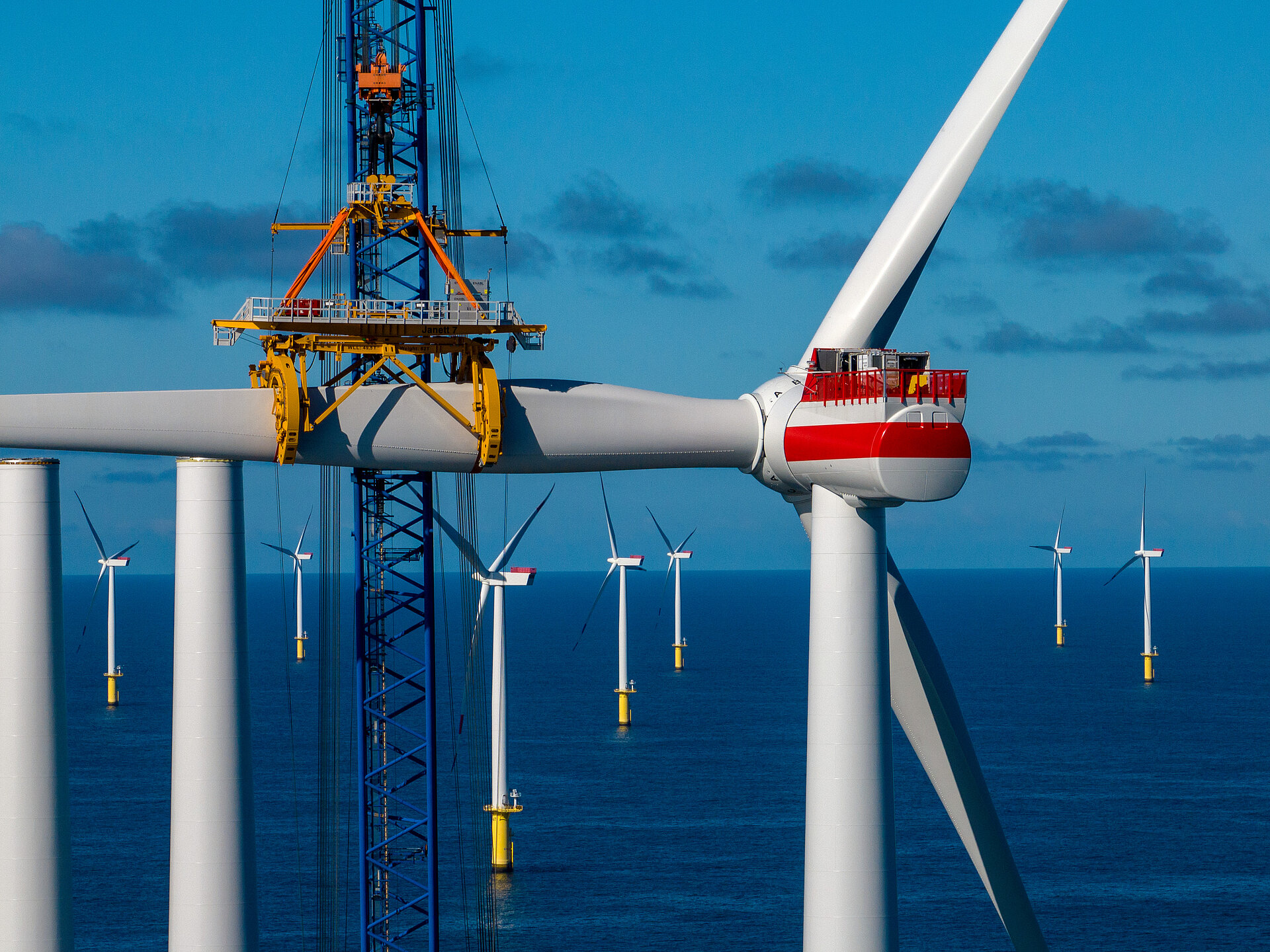Industry groups call for change to meet offshore wind targets

Rotor blade assembly at RWE's offshore wind park Kaskasi (Source: RWE AG | Matthias Ibeler)
Six industry groups representing companies engaged in Germany’s offshore wind sector have again called on the Government for revisions to the Wind Energy at Sea Act (WindSeeG) which, they claim, has serious weaknesses. In a joint statement, the groups have declared that without regulatory amendments, the 22GW of extra offshore wind capacity required to hit the 30GW target by 2030 may prove impossible to meet.
The year 2030 is only the first offshore wind target date. Others include 40-50GW by 2035 and at least 70GW by 2045. These milestones were set in November 2022 and although they were met initially with a positive reaction, the industry groups are seeking revisions to regulatory processes to make sure they can be achieved.
The wind industry bodies which have called for change are the German Wind Energy Association (BWE), the Federal Association of Wind Farm Operators Offshore (BWO), the German Offshore Wind Energy Foundation, VDMA Power Systems, offshore wind business network WAB e.V. and Wind Energy Network e.V. The organisations have previously criticised the legal framework which, they have said, requires adjustment.
Including the small additional offshore capacity that was commissioned in 2022 – just 38 turbines generating 342MW in the Kaskasi project – Germany now has total power generating capacity of 8.1GW from wind farms in the North and Baltic Seas. In addition, 27 foundations were installed on the Arcadis Ost 1 facility in 2022. This wind farm is expected to be completed and commissioned this year, adding a further 257MW of capacity.
In a joint statement released mid-January, the industry groups said: “To achieve the expansion targets by 2030, 22GW must be installed offshore in Germany in less than eight years. In Europe, a total of around 150GW of wind energy capacity is to be installed during this period. The industry therefore expects a significant increase from 2025 and especially towards the end of the 2030 expansion target, which requires industrial feasibility. A steady and even expansion path is needed to build stable supply chains and a future-oriented expansion of manufacturing capacities.
“The production capacities and skilled workers needed to achieve the expansion targets have been lacking for a substantial degree to date,” the statement continued. “A plan alone is not enough here. Together with politicians, we must immediately create a realistic basis for the implementation of expansion targets for offshore wind energy for electricity and green hydrogen.”
The industry bodies have reiterated their concerns about WindSeeG, claiming that the bidding component of the legislation, introduced last year, increases the risks for investors and burdens electricity customers with higher prices. This is because offshore wind farm operators will have to earn back the ‘bid component’, they explained – in other words, the extra cost associated with winning the bid in the first place.
The organisations are also anxious to ensure that a diverse range of entities can participate in the sector. They would like to see a safeguarding mechanism in the current process limiting, for example, the maximum amount of expansion to be subsidised per bidder and per year.
Emphasising the need for policy changes, the industry groups said: “With a growth of the offshore wind supply chain, immense value creation potentials open up, in addition to a cost-effective energy supply and greater security of supply for Europe. In addition, long-term and future-oriented employment prospects are also offered. These must be realised in addition to the necessary climate protection.”
The groups also highlighted the need for skilled workers and called for greater freedom of movement across EU borders. “The offshore wind industry needs a major training and qualification offensive supported by the German Government, easy investment and financing conditions, and the promotion of new production capacities that provide the necessary liquidity in the manufacturing industry, as well as internationally fair competitive conditions,” they declared.
